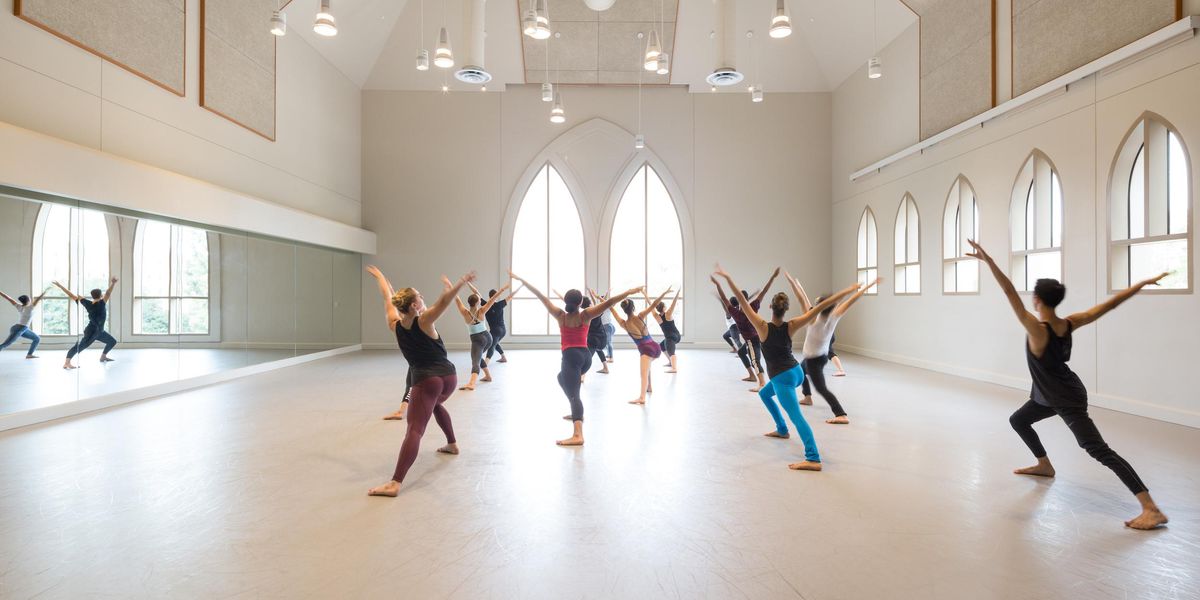Jean-Léon Destiné (1918–2013)
Crouching low to the ground, knees bent, feet moving side to side, back an undulating snake from the base of his spine to the top of his head, Jean-Léon Destiné mirrored the rhythms of the drums and sang a creole incantation to Damballah Wedo, one of Haiti’s vodun gods. Even in this lecture-demo during the 1990s, the 70-something Destiné captured the fluid agility and passion that characterized a career devoted to the dances of his beloved Haiti. Destiné died January 22 in Manhattan.
When master teacher, dancer, and choreographer Jean-Leon Destiné presided over classes at the New Dance Group in the heart of New York’s theater district, he was part of a legendary faculty that included Donald McKayle, Joyce Trisler, Dorene Richardson, Muriel Manings, and Sophie Maslow.
In the tradition of Katherine Dunham, Pearl Primus, and others, Destiné belongs to that branch of America’s cultural family tree committed to preserving the dignity of our African and Afro-Caribbean ancestry. He was an advocate of Haitian culture and its resistance to colonialism and slavery that, in 1804, created the world’s first independent black-led republic.
Destiné’s legacy lives both in the performances of those he inspired and in material he donated to New York’s Library for the Performing Arts that includes videos and films showcasing Caribbean culture, with a focus on the rhythms and rituals of Haitian vodun. (Click here for the homage to Destiné written by the library’s curator.) Among the archival material is his 1951 award-winning film, Witch Doctor, and a 2004 lecture-demonstration with invocations to Papa Legba, god of the crossroads between mortal and immortal; Papa Damballah, the good serpent of the sky; and dances one might see in documentaries like Maya Deren’s Divine Horsemen.
Destiné’s career began during his teens in Haiti when he studied with Lina Mathon-Blanchet. In the 1940s, he traveled with the company to New York where he won a Rockefeller Foundation scholarship that led, briefly, to studying journalism and printing. But his performance in Katherine Dunham’s 1946 Broadway production Bal Negre in the role of a young man possessed helped seal his fate.
In 1949, the Destiné Afro-Haitian Dance Company was formed. By 1961, he had appeared at Jacob’s Pillow five or six times, been awarded Haiti’s Chevalier Honneur et Mêrite, Officer de l’Ordre National Honneur et Merite, become Haiti’s Cultural Attaché in the U.S., and been asked to direct the First Troupe Folklorique Nationale. Destiné toured extensively with both companies while also teaching at the New Dance Group, New York University, and UCLA among other places. A short time before he passed, the 92nd Street Y hosted a program recapping the glory days of the New Dance Group. Though Destiné was unable to attend, he was fondly remembered as a kind and generous man. —Zita Allen
From Top: Destiné’s Afro-Haitian Dance Company; Destiné at Jacob’s Pillow in the 1950s, photo by John Lindquist; Destiné in
Slave Dance, photo by Moss Photo. All photos from Dance Magazine Archives.




